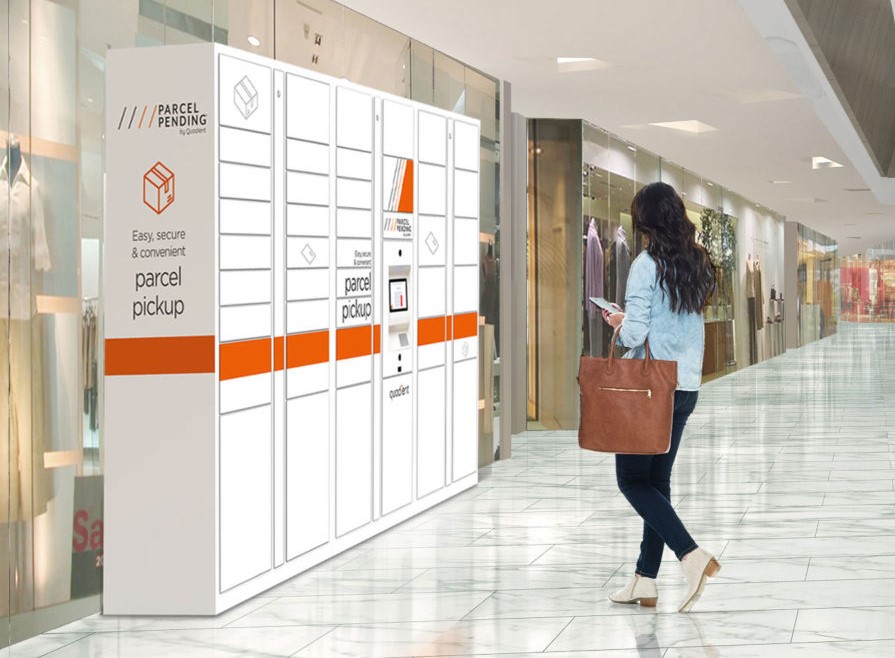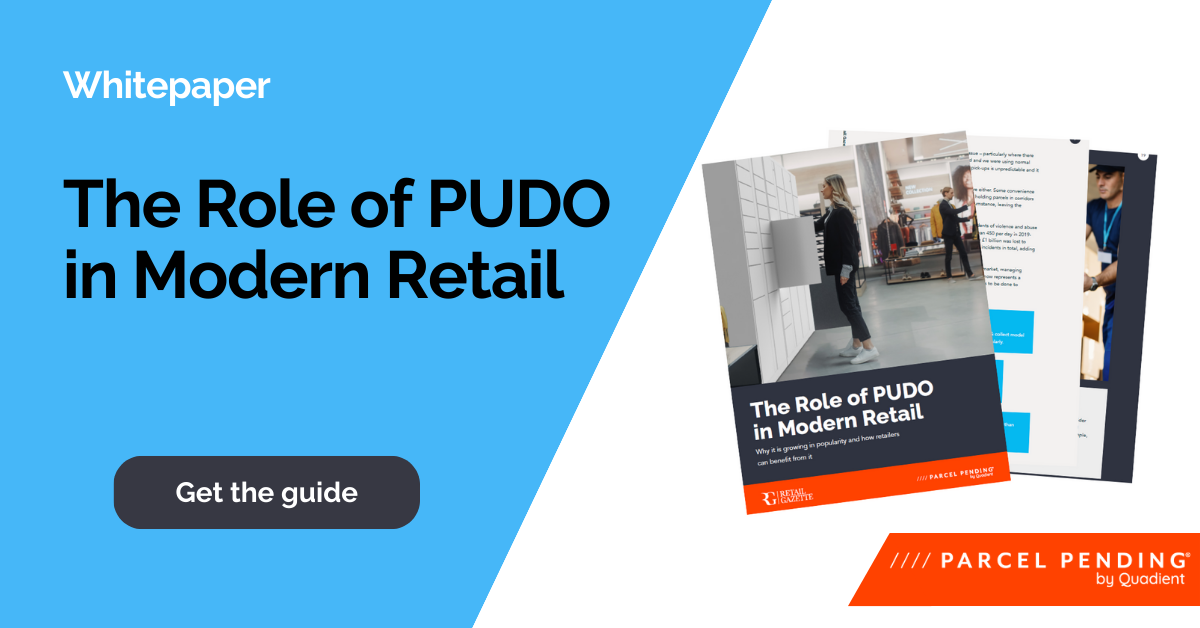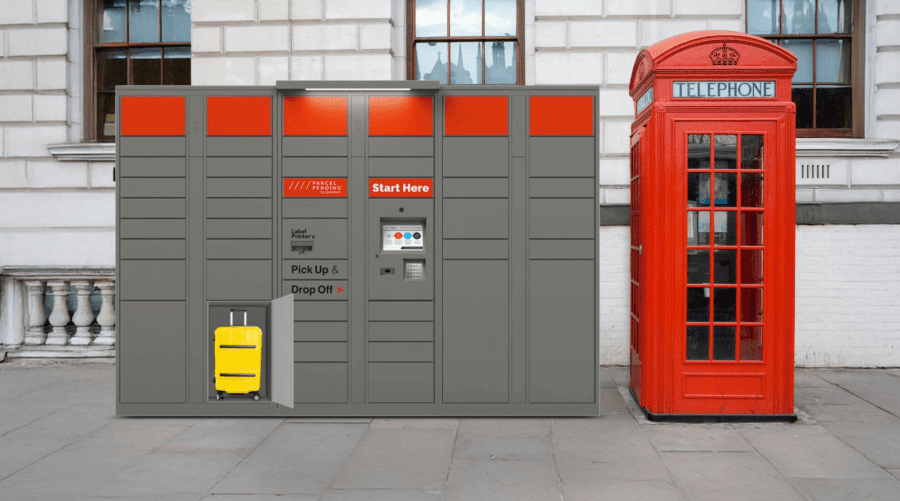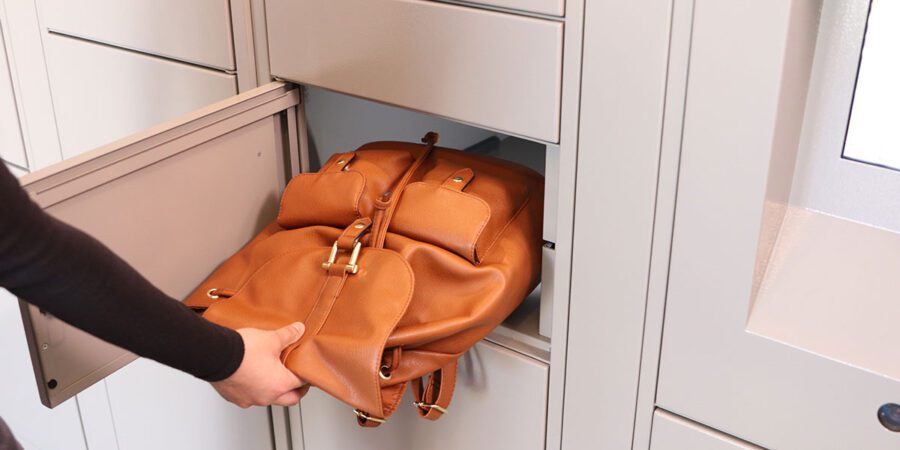
Open Locker Network
Five essential things to remember when implementing a PUDO strategy
Written by: Parcel Pending By Quadient
4 Min Read
Published: April 17, 2024
As the industry continues to evolve, retailers are looking for new ways to modernise their operations and improve their customer experience. One area that has seen significant growth in recent years is Pick-Up-Drop-Off (PUDO) services. PUDO services allow customers to pick up and drop off packages at a convenient location, such as a local retail store, rather than having them delivered to their homes.
While PUDO services have been around for over a decade, they are now becoming more popular as retailers look for ways to generate additional footfall, streamline their operations and improve their sustainability efforts. Consumer demand for more out-of-home delivery options is likely driven by the huge increase in doorstep parcel thefts, with reports to police increasing over 500% in just 4 years. Additionally, the decline in (working) printers at home means consumers need convenient ways to print labels for packages that are being sent or returned.
PUDO Vs Click & Collect – what’s the difference?
Although the two terms are often used interchangeably, click & collect usually refers to a service which allows customers to purchase items online from a retailer and pick them up at a specific store location – usually a branch of the retailer they have purchased from (or one of their partners).
PUDO (Pick Up Drop Off) refers to a network of locations where third-party packages can be picked up or dropped off. This service allows retail stores to generate additional revenue by providing a pickup and returns location for packages from other companies, such as courier services or e-commerce platforms.
How to implement a PUDO Strategy
Retailers can implement a PUDO strategy by partnering with existing PUDO networks or by setting up their own PUDO network using lockers or dedicated pickup locations. They can also offer PUDO as a value-added service for their existing customers, or as a standalone service for other retailers or courier companies. Some retailers may also choose to integrate PUDO into their existing omnichannel strategy, allowing customers to pick up online orders at the store or a nearby PUDO location.
If you want to use your location as a PUDO point, you may provide the service ‘over the counter’, which utilises your store staff and storage space to manage parcels. However, forward-thinking retailers prefer an automated parcel machine (APM), such as smart parcel lockers. These lockers are completely self-service so carriers and consumers can deposit and collect their parcels themselves – absolutely no additional labour required!
The benefits of implementing a PUDO strategy
There are several benefits to retailers of implementing a PUDO strategy.
For retailers and etailers, it can help to reduce the cost of last-mile delivery, as packages can be consolidated and delivered to a single location for pickup. It can also help to improve customer satisfaction by providing a convenient pickup option for online orders.
For Hosts offering PUDO services in store, it can help to increase foot traffic to their location, which can lead to increased sales. Recent research shows that 34% of consumers would use businesses more frequently if they provided parcel services, and would be significantly more likely to make a purchase from a store which enabled them to pick-up or drop-off parcels.
Whether you are a retailer looking to optimise your current e-commerce strategy, or looking to attract new footfall by offering third-party PUDO services, here are our top tips.
Essential things to remember when implementing a PUDO strategy
1. Optimise Staff and Store Space:
With limited space and resources, retailers must ensure that their PUDO strategy does not disrupt their existing operations. PUDO services should ideally be automated, seamlessly integrated into existing store operations and not require additional staff or space. A great option is to utilise outdoor space, that way you can provide PUDO services even when your store is closed!
2. Prioritise Security:
Retail crime in the store environment is on the rise, so retailers must opt for the most secure PUDO operating model. This can include using secure lockers or implementing a check-in system to ensure that only authorised individuals can pick up packages.
3. Streamline Returns:
For retailers providing e-commerce, returns handling is a drain on margins and a carbon emissions driver. So, retailers should focus on smoothing out reverse logistics processes. This can include implementing a returns portal or offering customers the option to return items at PUDO locations.
For retailers providing third-party PUDO services at their location, offering a solution that includes a printer can be a great way to encourage more people to choose your store, over a competitor.
4. Cater to Multiple Customer Preferences:
PUDO services can be an incremental revenue driver if retailers cater to as many customer journey preferences as possible. This can include offering different pick-up and drop-off options, such as lockers, manned locations, or automated kiosks.
5. Evolve Legacy Systems and Tech:
PUDO is now over a decade old as a concept, and retailers need to evolve their systems here in line with changing times. Retailers should look to implement new technologies, such as automated parcel systems or mobile apps, to enhance the customer experience and reduce costs.
To learn more, download the full whitepaper “The Role of PUDO in Modern Retail”.




